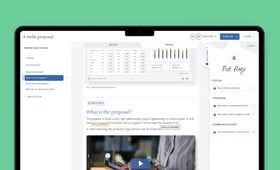Claire has served more than 11 years as company secretary at Angel Trains.
In the new world since COVID-19, almost everyone who can work from home has done so, and virtual board, committee, and management meetings have become the new norm. But while the technology exists to make running virtual meetings easier than it would have been ten years ago, one key challenge remains: taking minutes in a virtual meeting.
For boards and their committees, minutes aren’t just a useful reminder of what was discussed and agreed—they’re legally required. Board meeting minutes need to show that directors have fulfilled their legal and fiduciary duties and can be used both defensively and offensively in court proceedings.
In the current environment, organizations are likely to make difficult and unprecedented decisions, so it’s crucial that minutes show that the directors carefully considered the impact on all the stakeholder groups.
This can be difficult at the best of times, and doing so in a virtual meeting presents additional challenges. So, here are some tips to help company secretaries or PAs prepare for a successful virtual meeting.
1. Get familiar with the technology
Video technology such as Zoom is preferable for a fully virtual meeting, as it allows all attendees to be seen and it makes it much easier to know a) who is speaking and b) whether someone is keen to ask a question. But there’s often at least one board member who isn’t confident with technology and struggles to get up and running, so they want to join by phone instead. It may be useful to have a trial run to check that everyone can access the technology and can be seen and heard, especially in cases where IT teams can’t physically be on standby to assist.
2. Know who’s attending
Make sure you know who will be joining the meeting and who has sent apologies, so you can ensure that there will be a quorum. When the meeting starts, if you’re using video, you can see who has joined and simply go around the (virtual) room. If all or some attendees are joining by phone, take a register rather than everyone trying to announce their presence at once. You’ll also need to pay attention to anyone who leaves the meeting or drops off the call early, to note this in the minutes and be sure a quorum is still present.
3. Set yourself up for success with the Chair
Working closely with the Chair before the meeting is important to ensure that everything runs as smoothly as possible. Here are a few things you can consider:
- Suggest a preparatory call with the Chair to run through everything they need to keep in mind to keep the meeting running.
- Ask your Chair to get people’s comments and questions in turn to avoid everyone speaking over each other.
- If it’s a telephonic meeting, ask the Chair to get everyone to say their name before they share their comment, so that you know who’s speaking, especially if there are attendees whose voices are unfamiliar to you.
- Ask the Chair to summarize the key points and any actions after each item before moving on to the next, so you can check that you’ve captured everything important.
4. Get feedback before or after the meeting
Suggest that the Chair ask directors to share any comments on the previous minutes or updates on action items that aren’t covered elsewhere on the agenda, either before or after the meeting. Directors should be able to do this by email or using the annotation tools in their board portal app. This will save time going through them in the meeting and reduce the risk of the meeting secretary missing any detail.
5. Read the meeting papers
This might sound obvious, but it’s not always feasible for the company secretary to read all the papers submitted ahead of a meeting. It’s perfectly possible to take accurate minutes without doing so. However, for a virtual meeting, knowing what's in the papers will help you understand what’s likely to come up and keep up with the discussion. It will also help you recognize any names or technical terms you're unfamiliar with.
6. Don’t be afraid to interrupt
If you can’t hear what someone is saying, don’t be afraid to interrupt and ask them to speak more loudly or repeat what was said. If you can’t hear, the chances are other attendees can’t either, and could miss an important point.
7. Use a board portal app
There are so many benefits to using a board portal app such as Board Intelligence over email or PDF board packs.
To summarize thses benefits, a good portal can help make remote minute-taking easier by allowing you to make annotations and navigate papers more easily during the meeting. You can use the annotation tools to highlight key parts of a paper that you’ll likely need to refer back to when typing up your minutes. For example, you can highlight key figures and names to save time trying to find the relevant parts later.
You can also use your board portal to review papers during the meeting. This will help everyone stay on the same page because the page numbers are clearly visible at all times, and the pack is easier to navigate than a paper or PDF pack.
8. Take comfort breaks
While most attendees can slip away for a couple of minutes for a comfort break, the meeting secretary can’t do this for fear of missing something crucial. If it’s likely to be a long meeting, agree to take short comfort breaks at set times or after specific items. This applies to physical meetings too.
9. Share draft minutes with executive sponsors
Finally, although it’s standard practice to share the draft minutes of a meeting with only the Chair (and maybe the CEO) before circulating them more widely, I’d suggest that after typing up the minutes of a virtual meeting, it’s a good idea to share relevant sections with the presenter or executive sponsor of that item too so they can check that all the important points have been captured. This can be especially helpful if the subject matter was complex or the sound quality was poor.
I hope these tips help provide some confidence and guidance to company secretaries and others who may be facing the prospect of minuting virtual meetings regularly. And if you are a company secretary and have any additional suggestions of your own, please do get in touch.



